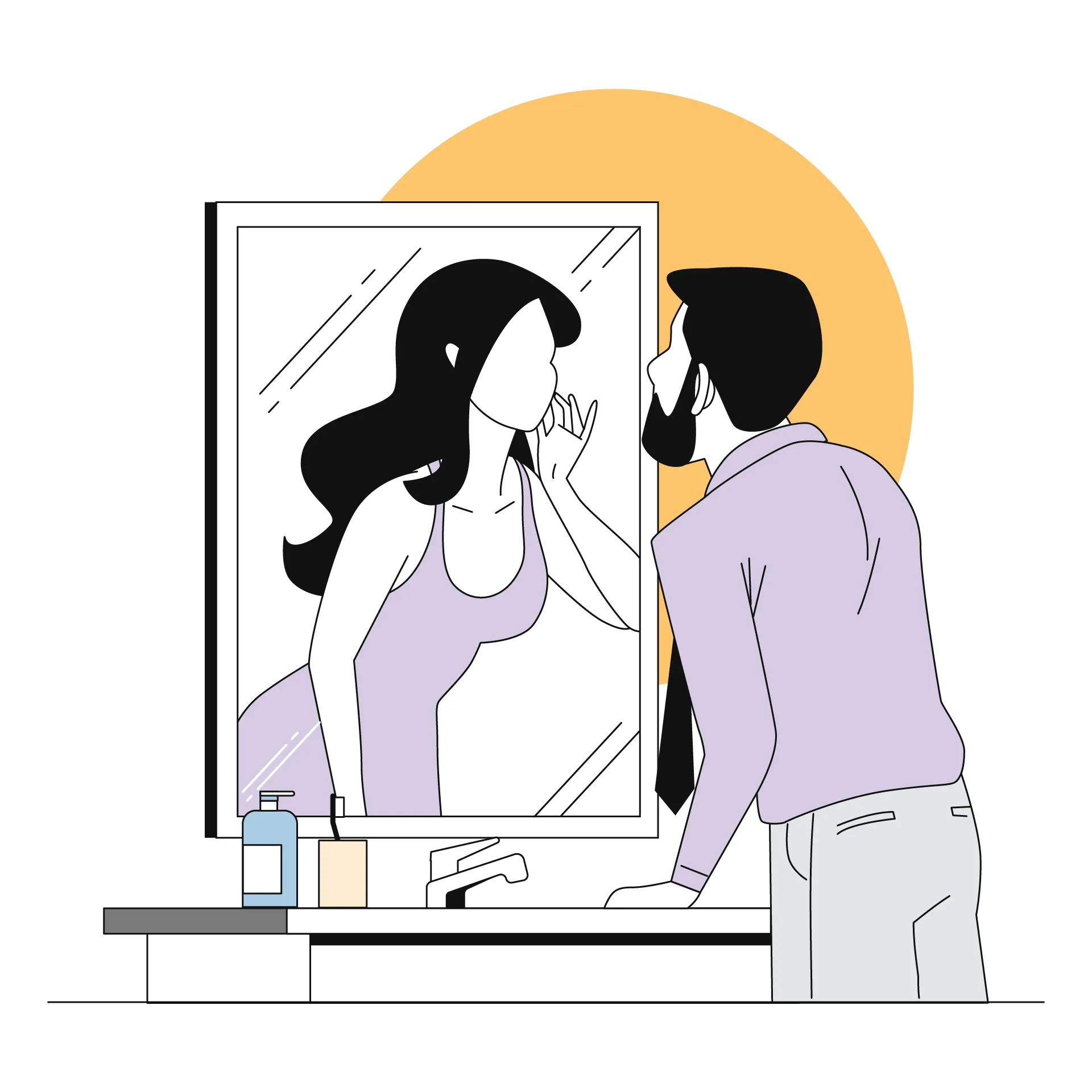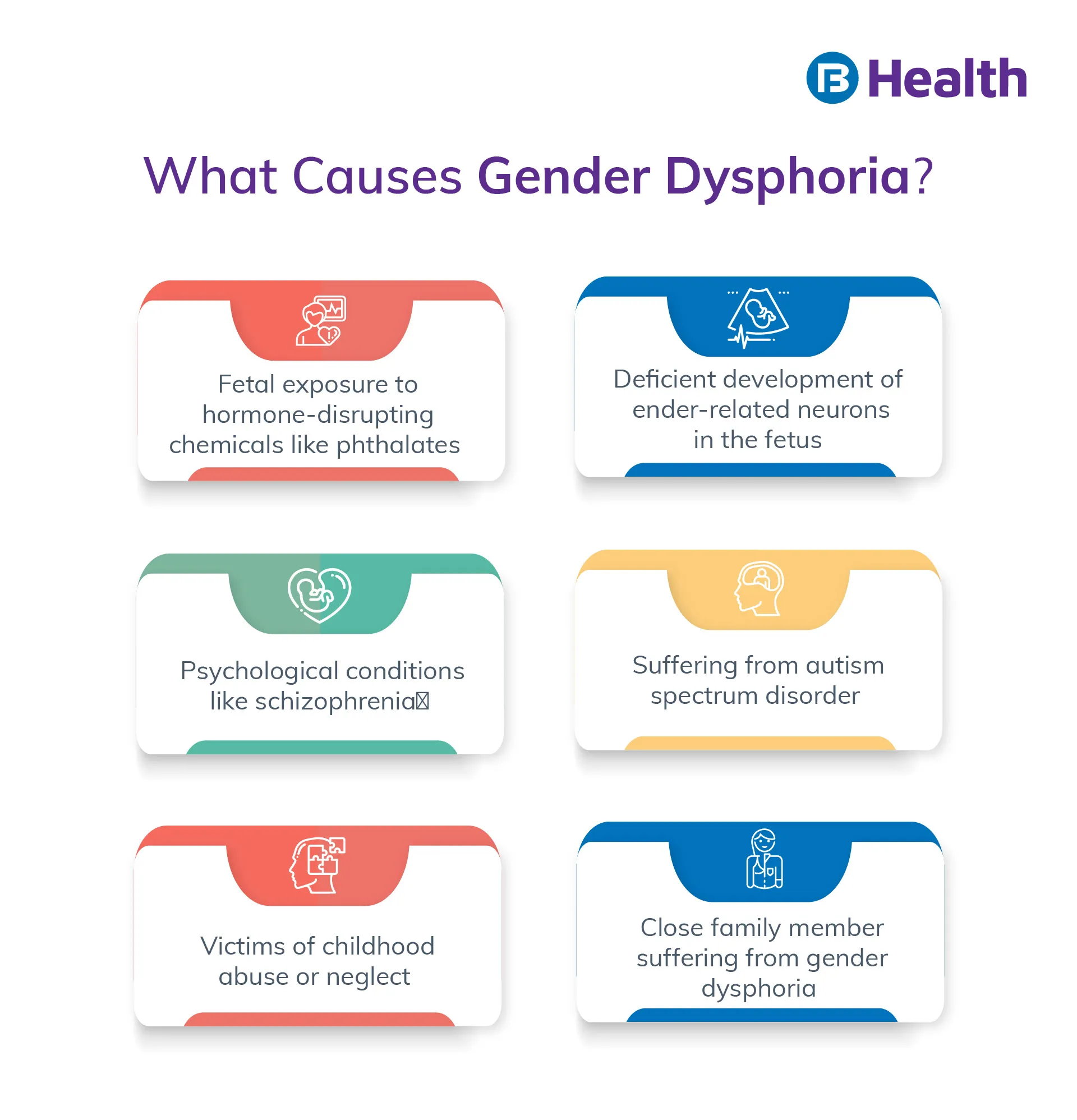Psychiatrist | 6 min read
Gender Dysphoria: Symptoms, Definition, Causes, Diagnosis
Medically reviewed by
Table of Content
Synopsis
Gender dysphoria is a condition where an individual feels uncomfortable with their biologically assigned gender. This affects their mental state as well as their ability to socialise. This article discusses the issues faced by people suffering from gender dysphoria.
Key Takeaways
- Transgender is the identity, while gender dysphoria is a condition
- The early signs of gender dysphoria appear in childhood but can show later in life also
- Gender identity disorder is not a mental disease. Suitable management techniques can mitigate psychological concerns
The identification of a boy or girl as gender is no longer tenable as individuals often encounter conflict between their biologically assigned gender and gender expression. Consequently, gender dysphoria is a condition where individuals struggle with their gender identity assigned at birth. These individuals are often uncomfortable with the role society assumes they will play according to their biological characteristics. Some people may experience this feeling at all times, while for others, this feeling may come and go. So, let us look deeper into why gender dysphoria sets in and how to manage it.
Definition of Dysphoria
Dysphoria is when a person experiences discomfort expressing gender behavior matching biological and physical characteristics. Gender identity sometimes gets mixed in transgender and gender-diverse people, causing a significant impact on their quality of life.
According to the American Psychiatric Association (APA), victims of gender dysphoria are prone to experience depression and suicidal tendencies besides substance abuse. So understanding the meaning of dysphoria, its symptoms, and its diagnosis can help people with gender identity disorder access proper healthcare and treatment. However, dysphoria management focuses on mitigating discomfort rather than identity.
Some may opt for medical transitioning to the gender they identify with. Since a person’s sexual orientation and gender identification are unrelated, gays, lesbians, bisexuals, or straight individuals can experience gender dysphoria.
Symptoms of Dysphoria
Though gender dysphoria often begins in childhood, others can experience it after puberty or even later in life. Since we already know that the condition can manifest in childhood and later, let us look at the symptoms separately.
Symptoms of Dysphoria in Adolescents and adults
- A noticeable difference between their biological sex and gender expression
- An overwhelming desire to identify with another gender
- An obsessive desire to change their physical characteristics
Symptoms of Dysphoria in Children
- A compelling desire to be a gender other than their own
- An aversion to their sexual anatomy
- Show preference for wearing clothes of another gender
- Affinity for toys associated with another gender
- Rejection and dislike of toys and activities associated with their physical gender
- A compelling desire to display sex characteristics of another gender
 Additional read: Obsessive-compulsive Disorder: Symptoms and Treatments
Additional read: Obsessive-compulsive Disorder: Symptoms and TreatmentsCauses of Dysphoria
You must understand the difference between gender expression and gender identity before looking for the reasons for dysphoria. So, gender identity refers to a person’s psychological impression of gender, while expression is the presentation to the world. For example, a dress is considered feminine, while a tuxedo is masculine.
It may result from a combination of complex factors, including physical, psychological, and social, without any specific cause.
Therefore, the possible reasons are:
- A congenital condition affecting sex hormones
- Fetal exposure to hormone-disrupting chemicals like phthalates
- Deficient development of gender-related neurons in the fetus
- Psychological conditions like schizophrenia
- Suffering from autism spectrum disorder
- Victims of childhood abuse or neglect
- Close family member suffering from gender dysphoria
Gender Dysphoria Diagnosed
A person must experience sustained and significant distress symptoms during their daily activities due to the conflict between gender expression and physical gender. According to the American Psychiatric Association (APA), a person must experience such feelings for at least six months. However, the diagnosis for children differs from adults depending on the criteria used by consultants. Moreover, gender dysphoria affects 0.005 to 0.014% males compared to 0.002 to 0.003% females.[1] Finally, a mental health test can also help diagnose the condition.
Challenges Faced By Gender Dysphoria Sufferers
The primary feature of gender dysphoria is the distress people suffer due to a mismatch between their gender expression and inborn gender. The determination of natal sex is biological, while the social construct determines gender expression.
In India, the lack of knowledge in society about sexuality and sexual practices complicates the issue of gender identity even more. Additionally, Indian medical professionals still lack adequate understanding of the subject.
Additional read: Borderline Personality Disorder
Gender Dysphoria Treatment
Specialists help individuals dealing with gender dysphoria explore their feelings and thus ease their distress. Although there is no one-size-fits-all solution, the management options include the following:
Therapy
The method gives individuals the space to understand their feelings and emotions, which can help them cope with gender dysphoria. Therapy effectively deals with dysphoria issues in school, workplaces, and relationships. The treatment mitigates depression and anxiety while boosting self-esteem.
Changing Gender Expression
Individuals can choose the path they wish to pursue. One can choose to live part-time or full-time in the other gender’s role. Adopting names and pronouns associated with the chosen gender is among the accepted norm. The other ways to alter gender expression include:
- Developing different vocal characteristics through voice therapy
- Changing your hairstyle
- Changing the way you dress
- Tucking or packing genital organs
- Binding or padding to reduce or enhance breast contours
- Using makeup
Medical Solutions
- Develop features through hormone therapy under the guidance of expert medical professionals. For example, one can grow facial hair using the treatment.
- Surgical procedures to remove or add breasts and change genitals resulting in sex change
Self-care Management
A customized self-care regimen helps mitigate physical and psychological health concerns. Some tips that help include:
- Get adequate sleep, regular exercise, and above all, eat a balanced healthy diet
- Practice yoga and meditation for stress management wherever possible
- Keeping in touch, support family members, friends, and others suffering from gender dysphoria
- Seek help from social media and mental health professionals to address various psychological outcomes
Managing Gender Dysphoria in Children
Children between the ages of 2 and 4 are most vulnerable and show gender dysphoria. [2] However, there are cases where the symptoms appear much later, especially at puberty, when they begin to reject their biological sex. However, children displaying non-conforming behavior are not necessarily suffering from gender dysphoria. On the contrary, many children emerge from the early signs of dysphoria as they grow up. According to an APA note, children with intense and persistent symptoms of dysphoria are potential transgender adults.
Support People With Gender Dysphoria
Support from loved ones is extremely important for people with gender dysphoria. Remember the following points while interacting with someone with gender dysphoria.
- Listen to the narratives of the person’s experience with gender dysphoria and acknowledge their distress and pain.
- Ask them about the help required without belittling their experiences or emotions.
- Encourage persons with gender dysphoria to get doctor consultations, especially when they display symptoms of mental distress, suicidal ideation, and substance abuse.
Therefore, persons with gender dysphoria who have the support of their loved ones are less likely to suffer from depression, anxiety, and other adversities.
The Support Includes
- Accompanying them to keep an appointment with a psychiatrist
- Seeking immediate help in situations like suicide attempts
- Ensuring children get doctor consultation for summer mental health.
Additional read: How Summer Heat Affects Mental Health
A person with a risk of self-harm needs the following:
- Ascertain if the person is contemplating suicide and listen to them without being judgmental
- Call for professional help and stay with the person till it arrives
- Keep any weapons, medications, and harmful objects out of reach
The treatment of persons with dysphoria depends on many factors, such as the severity of symptoms and the availability of proper support. However, many children showing signs of dysphoria during infancy are free from it as they grow up. Finally, overcoming social stigma is essential to counter the effects of gender dysphoria.
Additional read: Signs of DepressionSo, get a doctor consultation at Bajaj Finserv Health for insights into timely management and treatment. It can help prevent harmful complications like anxiety, depression, and suicidal ideation.
References
- https://www.medicalnewstoday.com/articles/gender-dysphoria
- https://www.therecoveryvillage.com/mental-health/gender-dysphoria/gender-dysphoria-statistics/#:~:text=The%20gender%20dysphoria%20age%20of%20onset%20can%20vary.,Others%20may%20not%20experience%20gender%20dysphoria%20until%20puberty.
Disclaimer
Please note that this article is solely meant for informational purposes and Bajaj Finserv Health Limited (“BFHL”) does not shoulder any responsibility of the views/advice/information expressed/given by the writer/reviewer/originator. This article should not be considered as a substitute for any medical advice, diagnosis or treatment. Always consult with your trusted physician/qualified healthcare professional to evaluate your medical condition. The above article has been reviewed by a qualified doctor and BFHL is not responsible for any damages for any information or services provided by any third party.





